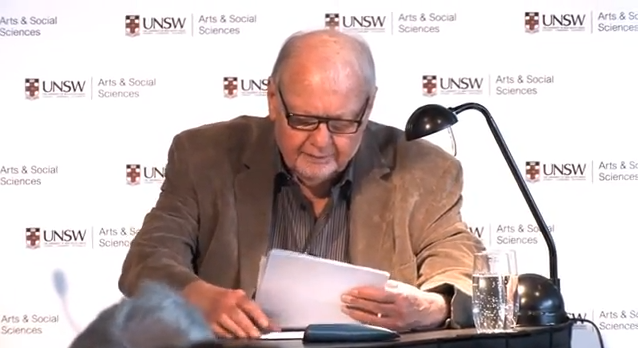Fredric Jameson on Wagner, affects, and the Übermensch


Most theorists have treaded down the road of Wagnerian analysis, most famously Theodor Adorno in In Search of Wagner, most recently Alain Badiou in Five Lessons on Wagner, and of course Slavoj Žižek. Fredric Jameson is no exception. In a talk available on Youtube and held in December 2012, Allegory and Dramaturgy in Wagner, Jameson offered a profuse analysis of Wagner’s operas, discussing the emergence of affects in World culture as well as questions of temporality, revolution, and unrepresentability through Wagner’s work.
Jameson starts by attempting to sketch the emergence of affects on the World culture scene. Affects, Jameson reminds us, are bodily states and therefore nameless, as opposed to emotions, which are “reified states of consciousness”. As “the body [was] scarcely registered in literature” prior to the middle of 19th century, affects were not yet available to authors as a means of expression.
Therefore, Jameson claims that “the traditional literary apparatus is incapable or at least ill-equipped to register the kind of sensations” that correspond to affects. Even in Balzac, replete descriptions are not meant to capture affects but rather “these features of his description are not affects but meanings, they mean decent misery, respectability or a decaying past. They are allegorical of social and psychological sociological states. They have none of the sensory singularity, of the unclassificable and indeed nameless haecceitas or ‘thisness’ of the Baudelairian or Flaubertian sensations”. With Baudelaire and Flaubert, affects or “bodily sensorium” start to emerge in literature and narrative crucially switches from the récit to the scene. The temporality of the reified emotion, its “past and future”, a destiny that can possibly be narrated, switches to the temporality of affects: “the perpetual, eternal present”, a “perspective calculated to destroy narratives as such”.
For Jameson this is embodied in the Wagnerian opera. The Tristan prelude and its unresolved tension are often said to be the beginning of modernity, but Jameson adds to this simplification:
Wagnerian chromaticism is in my framework to be grasped rather as the first full-blown emergence of affect as such on the stage of World culture and art. (…) The famous chromaticism of the Tristan chord is to be seen as the emergence of a new kind of content. But to understand this in terms of the opposition between affect and the older named emotions, one has only to compare the Wagnerian ideal of the so-called endless melody with the traditional Italian practice of the aria whose aesthetic function is clearly of expressing emotion, and a given named emotion at that: vengeance, love, grief. The extraordinary variability of the Wagnerian orchestra {…] stands in stark distinction with the closure of the aria which wishes to express one thing powerfully and completely, and then stop.
Although many attempt to divide the Wagnerian opera into various passionate emotions, this, like affect theory when it narrows down on specific, crucial affects, corresponds to a “neglect of the infinite sliding scale of emotions preferring to concentrate their description on this or that fundamental affect”. Indeed “affects are not essentializable in that way, they are multiple, perpetually variable, they shimmer like the orchestra itself, in constant mutability.” As Jameson declares, “passionate emotions are a succession of affects” interwoven by Wagner in his musical fabric through “an art of transition” based upon Wagner’s own mood swings.
Jameson then moves on to a rich analysis of The Ring’s revolutionary potential and dramatic unrepresentability. Perhaps following in the tracks of George Bernard Shaw, who saw the Ring through the framework of class struggle, Jameson analyzes Siegfried as potentially denoting “nascent bourgeois individualism” with his “ignorance about the world and his own genealogy”. The destruction of Valhalla and the waning of the Gods pave the way to the human age, while Siegfried might “enigmatically seem to stand for freedom.” After raising the question of the potential revolutionary nature of Wagner’s work (its utopian orientation was for instance analyzed by Bloch) Jameson ends with Nietzsche’s theory of the Übermensch, raising the key problem “of the constitution of the freedom of the people” within the ”political impossibility of making people free”:
The God can’t force the Superman to do what he wants to do because the Superman has to be free.
Visit YouTube to hear the talk in full.
